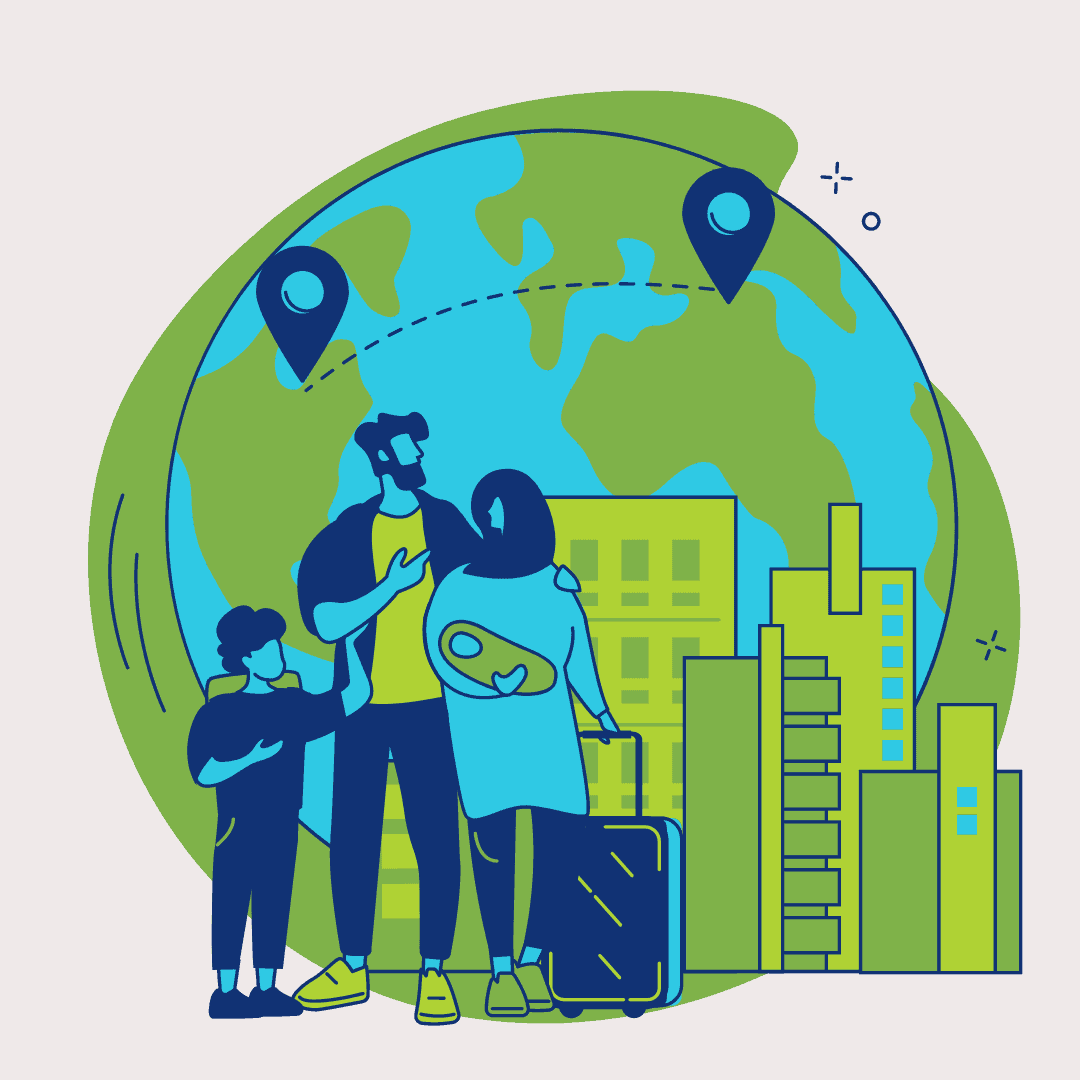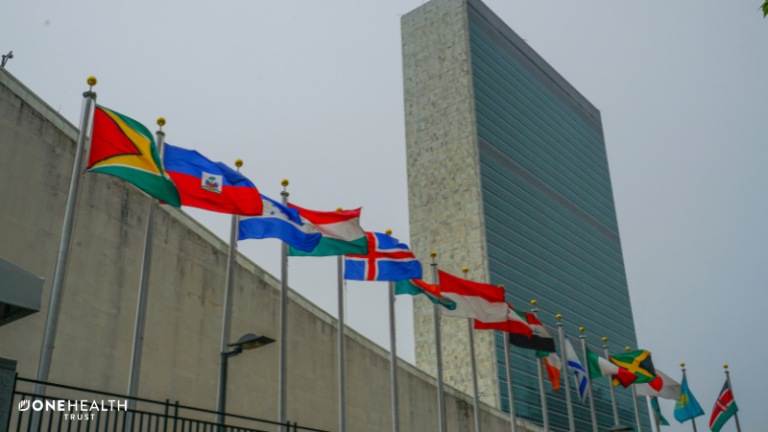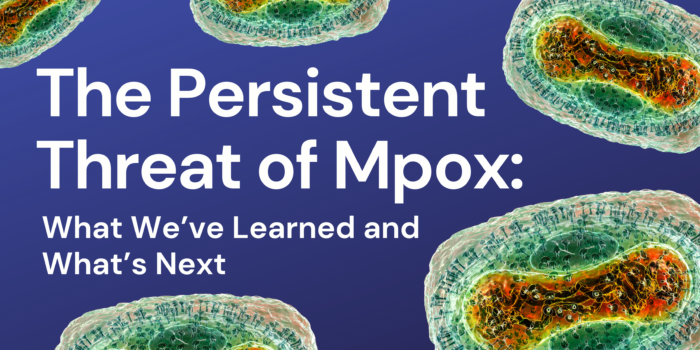November 21, 2022

Migrants and refugees across the world often face poorer health outcomes as a result of social and systemic discrimination, language and cultural barriers, and limited or lack of access to health services.* For this vulnerable population, unsafe or inadequate housing during migration, and exposure to pathogens during traveling increase the risk of acquiring communicable diseases (Vignier 2018), and this is compounded by the higher risk of contracting drug-resistant infections, often called superbugs. Drug resistance or antimicrobial resistance (AMR) develops when germs mutate and change over time and become resistant to the medicines that are used to treat them. Drug resistance complicates treatment and increases the chances of disease transmission and spread. AMR can develop or worsen as a result of delayed or limited medical care and heightened rates of infection. In this brief commentary, we explore recent literature and research on how migration and related factors can increase migrants’ vulnerability to drug-resistant infections.
According to the fourth WHO report of the Global Evidence Review on Health and Migration (2022), the number of migrants and refugees globally has grown significantly since the early 2000s. In 2020, migrants represented nearly four percent of the global population (Batalova 2022). Drivers of infectious disease emergence and transmission, such as crowding, poor sanitation, and lack of access to clean drinking water, are prevalent not only along migration routes but also in refugee camps and migrant worker housing (WHO 2022).
For migrants, the journey does not end in their host countries. The challenge of navigating their host country’s healthcare system is exacerbated by linguistic barriers; different cultural understandings of health, illness, and the body; country-specific legal restrictions; fear of deportation or retribution for accessing healthcare services; and discrimination. They also often face economic barriers and a lack of social networks to help navigate both private and public health services and products. Faced with these obstacles, migrants and refugees may delay accessing care for themselves and their families or may be unable to receive the medical services or resources they need entirely.
In the case of bacterial infections, inadequate healthcare access and linguistic barriers can lead to misdiagnosis and poor-quality treatment, resulting in inappropriate antibiotic prescriptions. For example, a study involving Palestinian refugees in Jordan indicated that at least 62 percent of respondents had used antibiotics without a prescription (WHO 2022). Inappropriate use and overuse of antibiotics are major drivers of AMR. In fact, a systematic review of AMR among migrants and refugees in Europe showed that the prevalence of AMR carriage or infection, including methicillin-resistant Staphylococcus aureus (MRSA) and gram-negative bacteria, was increased among asylum seekers and refugees residing in high-density migrant communities compared to non-refugee migrants (Desai et al. 2022).
Research shows that vaccination is a critical tool to control the spread of AMR and prevent AMR infections in the first place (Heymann et al. 2022). However, evidence shows that migrants may be less likely to follow regional vaccination schedules and more likely to face barriers to accessing vaccines in their new country (Eiden et al. 2022). For example, one study showed that the migrant Roma population from Romania and Slovakia had limited access to catch-up vaccines in the United Kingdom due to a lack of Romani-speaking interpreters and healthcare providers’ misinterpretation of Roma culture, among other factors (Crawshaw 2022). The study also showed that in the European Economic Area, which includes the EU countries, Iceland, Liechtenstein, and Norway, migrants from Morocco, Turkey, and Somalia prefer oral information about vaccines and healthcare in general over written communications. In the absence of official verbal guidance, these individuals often turned to friends, family, or the Internet, where they may have received misinformation. Other obstacles that prevented migrants from receiving vaccines included doubt about their legal access to medical services, anxiety related to their migration status, lack of a permanent address, and insecure housing. This was further complicated by healthcare providers’ insufficient knowledge about migrants’ rights to healthcare or discriminatory beliefs, which often led to migrants being erroneously denied access to primary care and vaccination appointments (Crawshaw 2022).
Given the enormous barriers migrants often face to accessing important AMR prevention tools such as vaccination and sanitation services, and the circumstances they endure that can exacerbate AMR, more research and funding should be dedicated to addressing the gaps in our knowledge of how AMR affects migrant populations’ health and well-being. With growing migrant populations in the world due to climate change, war and conflict, and global social and economic disparities, healthcare providers and policymakers must find ways to mitigate the dangers and challenges faced by migrants worldwide to promote better health for everyone and stifle the growth of AMR.
Batalova, Jeanne (2022). Top Statistics on Global Migration and Migrants. Migration Policy Institute, https://rb.gy/evkkzv.
Crawshaw AF, Farah Y, Deal A, et al. (2022). Defining the determinants of vaccine uptake and undervaccination in migrant populations in Europe to improve routine and COVID-19 vaccine uptake: a systematic review. The Lancet Infectious Diseases, https://doi.org/10.1016/S1473-3099(22)00066-4.
Desai AN, Mohareb AM, Hauser N, Abbara A. (2022). Antimicrobial Resistance and Human Mobility. Infectious Drug Resistance, https://doi.org/10.2147/IDR.S305078.
Eiden, Amanda L., Barratt, Jane, Nyaku, Mawuli K. (2022). Drivers of and barriers to routine adult vaccination: A systematic literature review, Human Vaccines & Immunotherapeutics, https://doi.org/10.1080/21645515.2022.2127290.
Heymann, David L., Kieny, Marie-Paule, Laxminarayan, Ramanan (2022). Adding to the mantra: vaccines prevent illness and death, and preserve existing antibiotics, The Lancet Infectious Diseases, https://doi.org/10.1016/S1473-3099(22)00374-7.
UNHCR (2016). UNHCR viewpoint: ‘Refugee’ or ‘migrant’ – Which is right?. The UN Refugee Agency, https://www.unhcr.org/en-us/news/latest/2016/7/55df0e556/unhcr-viewpoint-refugee-migrant-right.html#:~:text=We%20say%20’refugees’%20when%20we,Choices%20about%20words%20do%20matter.
Vignier N, Bouchaud O. (2018). Travel, Migration and Emerging Infectious Diseases. Journal of the International Federation of Clinical Chemistry and Laboratory Medicine, PMID: 30479600.
WHO (2022). Capturing the evidence on access to essential antibiotics in refugee and migrant populations. Geneva: World Health Organization; (Global Evidence Review on Health and Migration (GEHM) series), https://www.who.int/publications/i/item/9789240057807.
* Refugee status is determined through a legal or administrative process by which countries or the United Nations Refugee Agency (UNHCR) assess whether a person requesting international protection is regarded as a refugee under international, regional, or national law. A person may seek refugee status if they are unable or unwilling to return to their country of residence or of origin and they are fleeing armed conflict; violence; or persecution in their home country based on their race, religion, nationality, gender, sexuality, or social or political affiliation. Migrants are people who move from their country of origin to another country for any reason, which could involve violence, discrimination, economic hardship, healthcare access issues, among others. While all refugees are migrants, migrants are not necessarily refugees and are not legally protected by the same international laws as refugees (UNHCR 2016).











